As I’m sure many of you have already heard, the story about how famed anime Director Kunihiko Ikuhara — known for such works as Sailor Moon, Revolutionary Girl Utena, and the recent smash hit Sarazanmai — secretly directed the one of the first episodes that turned Teenage Mutant Ninja Turtles into a household name is hitting all the major anime news outlets and taking social media by storm.
In light of his spectacular portfolio and what a revolutionary series Ninja Turtles would become, the story certainly seems believable. What’s more, it’s even backed up by a statement by the story writer, David Wise, himself.
But is this really the case? Well, as they say, if something is too good to be true…1
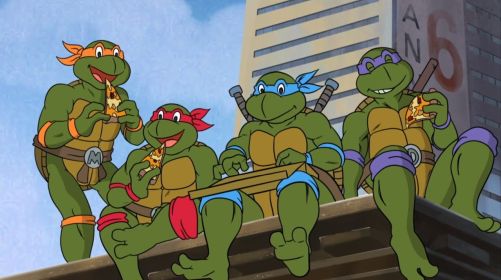
If you told me I’d be blogging about Ninja Turtles on a Sailor Moon blog, I’d have never believed you…
Before we start dissecting things, it’s probably best that we at least put together as much of the story as we can.
First and foremost, David Wise never actually mentions Kunihiko Ikuhara by name in his 2013 interview with Cowabunga Corner, but it’s pretty obvious who he’s talking about:2
I later discovered [episode 4, “Hot-Rodding Teenagers from Dimension X “] was actually directed by… oh, Lord, I’m not going to be able to remember his name now. But he was the director of the… all but, I think all but the first season of Sailor Moon.
God, um, he used to live out here. We went, we went out and had dinner and he was like… and I was talking about this episode and he goes “Yeah yeah yeah,” and he’s eating it up and I go “Dude, what’s the deal?” And he goes “I directed it.”
For a little bit of context, David Wise had been told that the animation for episode 4, which he notes as one of his favorites for that reason alone, was done by TOEI Animation. And not only that, but that it was done by their “A Team,” usually reserved for domestic anime to be released in Japan and not the “B Team” that was usually assigned to cartoons produced abroad.
On the surface, his statement is entirely believable. We know for a fact that TOEI Animation did work on the first five episodes of Teenage Mutant Ninja Turtles due to information provided on their own website.3 Though we don’t know the extent of their involvement, it’s theorized that they did the opening animation and it’s certainly likely that they worked on several whole episodes.
We also know that Ikuhara was living in Los Angeles from 2001 to 2002 as a part of the Japanese Agency for Cultural Affairs’ “Program of Overseas Study for Upcoming Artists.”4 It’s not out of the realm of possibility — indeed, it’s easily possible — that the two became acquainted during that time since they were both in the same place and working in the animation industry.
Sounds good, right?
Well, not quite. We still have a few more things to work out. Like, for instance, why information that was revealed in 2013 is blowing up online now, six years later.
It all started with a tweet by Twitter user @ashuraou:5
Fun fact: Every 80s kid probably remembers the 5 part #TMNT pilot which had the best animation of all 80s Turtles stuff; 'Hot Rodding Teenagers from Dimension X' was especially good. Why? What people don't know is that episode was (likely) directed by Kunihiko Ikuhara. #TMNT35 pic.twitter.com/q3MVIxhAkJ
— Brady Hartel (@ashuraou) May 15, 2019
When you have a combination of “too good to be true” reveal and a story about a public figure who’s already blowing up in the anime community with his latest work, Sarazamai, it’s only natural that anime/comic/media-focused news outlets pounce all over the story.
The only problem with this is that it’s wrong. Or at least so unbelievably unlikely that “false” is a far more likely answer than “true.”
I’ll save my political commentary for another time,6 but suffice to say that being first to print wins out over fact-checking pretty much every time.
That’s not to say that I’m entirely unsympathetic to the plight of these writers, of course. When you’re reporting on Japanese media, it’s really hard to get your hands on accurate information, especially if you don’t have a translator on staff or the language skills to do it yourself. The English Wikipedia pages on many Japanese icons are a sad shell of their Japanese counterparts with far less content and inaccuracies abound.
There’s also just enough information out there, such as the points I’ve outlined above, that makes this story believable. The story, that Director Ikuhara of Sailor Moon and Utena fame actually worked on Ninja Turtles is so amazing that you just want to believe it.
So in light of all that evidence, why am I so certain it’s wrong, you ask?
Glad you asked!
1) Ikuhara was not yet a part of TOEI Animation’s “A Team”
Joining TOEI Animation in 1986 after graduating from college in 1985, Ikuhara was put to work on Maple Town Stories as a production assistant (制作進行) and director’s assistant (演出助手). Not only was he still relatively new to the industry when Ninja Turtles aired, but you still need to account for the fact that the show, much like Rome, was not created in a day.
The relevant Ninja Turtles episode aired in the United States in late December 19877 as a block of five episodes, which means that a considerable lead time was needed in order to get the 110 minutes of animation ready for the US to dub the voices in and finalize. Of course, according to David Wise’s statements, we know that multiple studios worked on these episodes concurrently, but even then it would still take one to two months.
I don’t know about you, but I find it highly unlikely that a staff member with less than one and a half years’ experience in the industry is entrusted with directing an entire episode.
And speaking of which…
2) Ikuhara did not direct anything until 1990
The Japanese word 演出 (enshutsu; production, direction)8 can be difficult to translate because it can mean a wide variety of work in different industries. The exact work involved, in fact, can even change from one company to the next.
At TOEI Animation, the term is used to refer to the person who controls the overall direction and timing of the story using storyboards.9 “Director” is probably a fair term for this.
As a completely irrelevant aside, TOEI has a specific format that its directors are expected to abide by. Each page consists of six boxes on the left with space on the right. The director is intended to draw a rough sketch of what they want to happen in that scene in the box and a description on the right for the art director. Each of the boxes is meant to take up a designated amount of time in order to standardize the work process. Ikuhara was yelled at multiple times in his career for “wasting” too much time on certain scenes.
Anyway, back to the point at hand, Ikuhara would not be given the opportunity to direct (演出) his own anime episode until episode 18 of Mōretsu Atarō, which debuted on August 18, 1990,10 over two and a half years after his supposed directorial debut on TOEI’s crack team of animators.
3) Ikuhara was already busy throughout 1987
In addition to the two main points raised above, it’s also worth noting that Ikuhara was likely already occupied throughout 1987 with his duties as a director’s assistant on New Maple Town Stories, which ran a total of 50 episodes from January through December.11
With such a tight schedule of nearly one episode a week, I find it hard to imagine that he also had time to take the directorial lead on a foreign property while continuing his normal work. Obviously being overworked is a very real issue in Japan, and especially in the animation industry, but it’s incredibly uncommon to see someone working on two series at the same time unless they’re high up enough that they aren’t involved in the day-to-day operations.
So where does this leaves us?
It’s a bit of an odd place to be in: someone telling a first-hand account says specifically that Ikuhara worked on the episode in question, though the facts don’t support it. On the other side of the coin, I can’t absolutely prove that he didn’t work on the episode. But when we weigh the evidence (one man’s statement vs. another man’s documented career), I’d err on the side that this is not true, and that Kunihiko Ikuhara had no involvement in the Ninja Turtles cartoon.
What I think happened is that David Wise is recounting a personal anecdote to the best of his ability and memory, but that it was inaccurate. It could easily be the result of him mis-remembering the exact statement made over a dinner that happened 11 years prior, or it could have been a “lost in translation” moment where the two misunderstood each other.
It’s very easy for “I was a director at that company” to turn into “I directed that episode” either through a slip of the tongue or as your memory of a one-off comment fades.
Now that you have all the facts in front of you, what do you think is the case? Do you side with Mr. Wise’s statements, or do you think it was a misunderstanding? I’d love to hear your opinion down below!
References:
- …it probably is. ↩
- See timestamp 32:56 in Cowabunga Corner #121: David Wise Interview ↩
- See this circa 2003 TOEI Homepage capture of collaborated works ↩
- See Kunihiko Ikuhara (Wikipedia) ↩
- See this May 14, 2019 tweet by @ashuraou; “Fun fact: Every 80s kid probably remembers the 5 part #TMNT pilot which had the best animation of all 80s Turtles stuff; ‘Hot Rodding Teenagers from Dimension X’ was especially good. Why? What people don’t know is that episode was (likely) directed by Kunihiko Ikuhara. #TMNT35” ↩
- Like the fifth of never — seriously, I really don’t like discussing politics ↩
- See Hot-Rodding Teenagers from Dimension X (IMDB) ↩
- See 演出 (Jisho.org) ↩
- See (アニメの)演出さんがやる仕事は具体的になんなんでしょう? ↩
- See Mōretsu Atarō (Wikipedia) ↩
- See New Maple Town Stories (Wikipedia) ↩
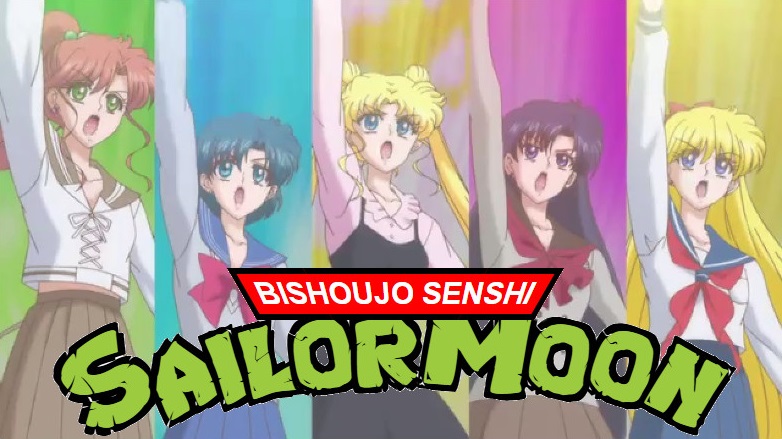
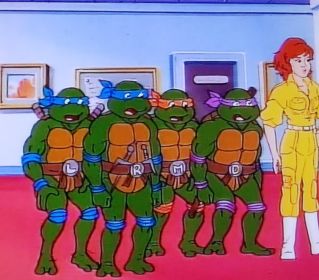
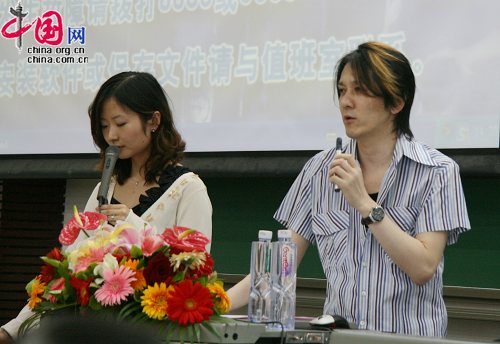
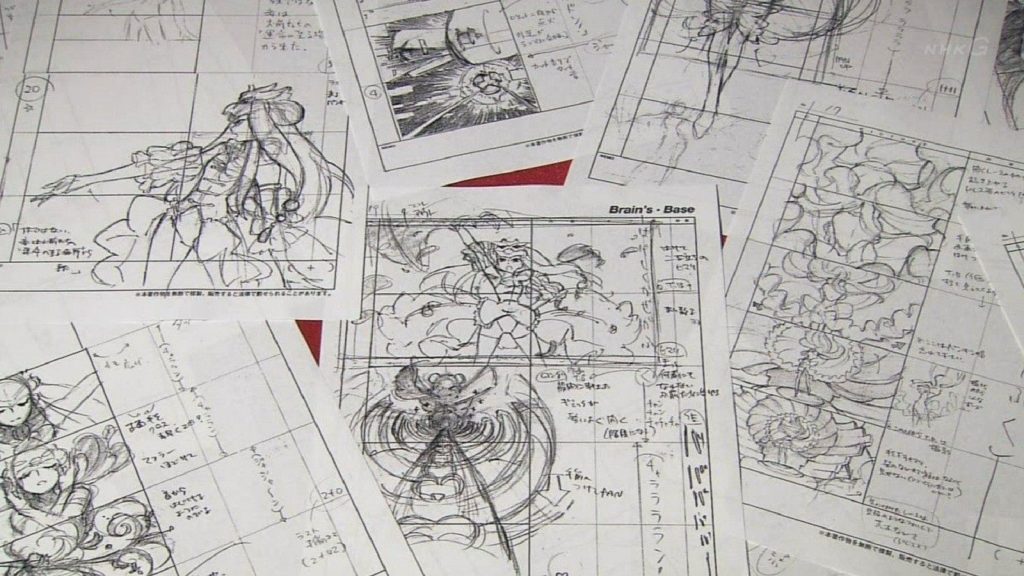
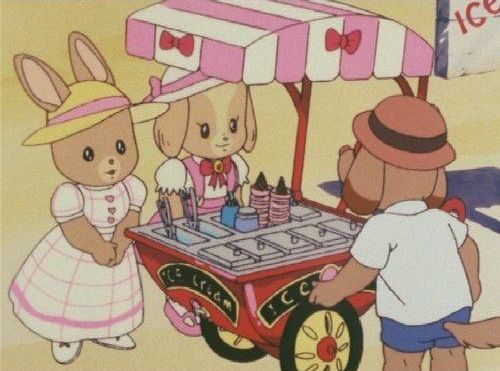
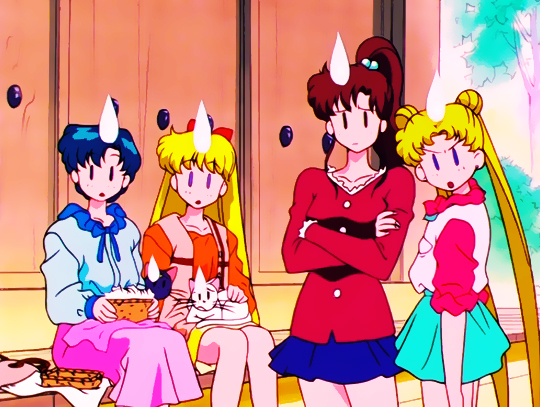

According to turtlepedia, the director was Yoshikatsu Kasai? I feel like the entire anecdote was a misinterpretation, I mean David didn’t even call out Ikuhara by name, and what with his sense of humor, I can completely see Iku making a joke on the side that was misinterpreted perhaps as being taken literally? Either way, your facts stand very well against this claim! I was very shook when reading that tweet this morning, let me tell you… and some of the visual similarities (the car! Wakaba!) are uncanny. Not sure WHAT to believe but I don’t doubt the lost in translation/iku’s sense of humor route, especially when direction is entirely accredited to someone else.
That’s really the greatest tragedy of this in my opinion — it’s robbing the real director of their proper accolades. =(
It’s very likely that the episode was directed by Yoshikatsu Kasai, so it’s a real shame to watch the media rewriting this fact to credit someone else.
Uhhh you do realize that it is common for multiple people in the anime industry to use an existing person’s name as an alias especially for outsourced work by novice animators/directors like this, right? This is not all that different from the writers of Sunrise shows constantly going by the name “Hajime Yatate”, who is not and has never been one individual.
The Kasai Yoshikatsu you’re thinking of is a completely different director who worked in the industry ten years before Ikuhara joined, and I would honestly believe the creator of Teenage Mutant Ninja Turtles, the director of those episodes who confirmed he directed those episodes over Turtlepedia or IMDb (which is fan-edited and barely regulated and fact-checked). Him using that as an alias during his early days at Toei is not impossible. and you don’t have any right to claim that it isn’t.
Judging by this and other comments, I seem to have hit a sore spot here. I’m sorry if I’ve upset you with this article. =(
I agree with you that I can’t prove beyond a shadow of a doubt that it was not Ikuhara that directed the episode, though that’s simply because it’s not possible to prove a negative. Further, I openly admit (and address several times) that what I’ve written here is only circumstantial “evidence” at best.
But this isn’t a court of law and no one is on trial. This is a blog meant to take a deeper look at the world of Sailor Moon and the people involved in its creation.
People’s memories are faulty. Even Naoko Takeuchi has given multiple conflicting statements on the creation of Sailor Moon over the years.
I’ve been wrong before, and will almost certainly be wrong again. =) It’s to the credit of observant readers like yourself that I’ve been able to address points where I’ve gotten things wrong.
If there is any information out there that supports the “Ikuhara directed a TMNT episode” theory other than the single 2013 David Wise interview, I’d be more than happy to revise this article.
Hi, I’m the person who tweeted this originally.
-I’m not a writer, though I did fact check this as much as I possibly could. I’m not rushing for any fame. I just like to tweet fun and silly things. Hell, I tweeted something extremely stupid the other day about a new movie and that has like 20k retweets. This isn’t some kind of popularity contest for me, just a cool fact I realized listening to some interviews.
-The only reason this came to light now is because I work 3 jobs and have insomnia and I was listening to a bunch of interviews. It’s the TMNT 35th anniversary and after a friend streamed the arcade game recently I’ve been on a kick.
-I’ve never watched his new show; I don’t know anything about it. The last Ikuhara show I watched was Yuribears. I haven’t had the time. I only recently heard it was popular. Cool.
-People have misread both my tweet and the ANN article. They both made it clear that we’re only talking about ONE EPISODE: ‘Hot Rodding Teenagers from Dimension X.” Not all 5. It’s likely the other 4 had different true directors. Episode 3 was animated in Korea.
-I’m fairly certain Ikuhara lived out here for longer than 2 years. If not, he would visit often. I’ve heard fun stories about his time in America from multiple friends in the industry and he seems to have stuck around a lot and made a lasting impression.
-Toei likely did animation for all five episodes, but the full credits aren’t on any of the five episodes- Just two japanese names IIRC. Toei probably doled out each episode to a different team or subcontracted to studios for others. The third episode, for sure, went to a Korean studio, so who knows who actually directed them all. That’s probably why the credits are all so vague. What I do know is Fred Wolf had just come off of doing the first season of Ducktales, which also had a really big budget pilot animated by Toei.
-It may be that Kasai was in charge, but merely oversaw the project. We’re at the mercy of whoever built the credits list for each episode, and the data they had was obviously from Japan.
I work on producing the English versions of a lot of anime, and even today, Japan does not provide a full list of credits most of the time. It’s 99% of the time the bare minimum. We have to do research to properly credit most people. Back in the 80s, it was less likely that they sent full lists of credits to US shows, and just who was important to credit. Like execs and producers.
All of these shows were animated overseas and how many Japanese names are on them? I think like two.
Further, it could be that Kasai is an alias used by the studio for projects not all done by one person, similar to the Hajime Yatate situation. I was not able to find much info on Kasai beyond his credits.
-It’s obvious that Wise is talking about Ikuhara. There is no reason for Wise to lie about this; him saying this does not benefit him much in the long run. In fact, this video was from 2013… so he can’t be capitalizing on Ikuhara’s newest success. Further, by the time they likely met, Ikuhara was already a director and famous enough as it was, so he really had no reason to lie to Wise either.
-I think there’s a pretty big fallacy in your logic in saying he wouldn’t have time. If you don’t think he could work on multiple projects at once, I think you do not understand how production works. Of not just anime but anything. Especially in an industry known for overworking and overburdening its employees.
-While Wise says the “A-Team” did it, it’s also possible that it /was/ a “B-Team”, and whoever was on this particular team really wanted to impress. So they went the extra mile. If this was early direction by Ikuhara this would make sense. Maybe he was trying to show off how good he was.
Thank you for stopping by the add your feedback on this. I won’t be able to address every point, but I will provide a few comments:
1) If it sounded like I insinuated that you were riding some sort of popularity wave, I didn’t mean it that way. My commentary was directed at news sites, not toward you. Twitter is for fun, random commentary and (I hope) everyone takes what’s written with a grain of salt.
2) The biggest sticking point for me is that there is literally no proof that he worked on it other than the one David Wise comment in 2013. As I mentioned multiple times, I cannot prove that Ikuhara didn’t work on it, but the evidence definitely doesn’t look good in my opinion. However, the burden of proof goes both ways. Aside from the 2013 comment, I’ve yet to see any other evidence proving the affirmative.
3) I never said that Wise was lying, nor that was he capitalizing on Ikuhara’s fame. I said that he may have misremembered, or there may have been a language mixup. Indeed, if we go on to say that Wise was wrong about the A-Team, is it not possible that Wise was wrong about Ikuhara’s specific role? I.e., that he was simply a director at TOEI, or maybe that he had some other, small part that Wise interpreted as directing.
Based on the analysis of the appearance of the characters “Neutrino” (modern art), the fact that they are punks from dimension X, they hate War.
They are young and there is a love line.
Then we remember Iku-chan and everything connected with him.
What is the conclusion?
We have already seen this somewhere.